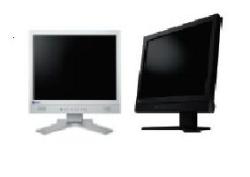Feb 19 2010
Eizo Nanao Corporation (TSE: 6737) today announced the release of the 17-inch DuraVision FDS1701, its first product designed specifically for the security and surveillance market.
 Eizo Nanao Corporation today announced the release of the 17-inch DuraVision FDS1701, its first product designed specifically for the security and surveillance market
Eizo Nanao Corporation today announced the release of the 17-inch DuraVision FDS1701, its first product designed specifically for the security and surveillance market
EIZO develops, manufactures, and quality control tests its own products to ensure it can tailor them to the needs of a particular market such as security and surveillance. With a wide scope of visual display products for both corporate and specialty markets, EIZO has built a strong relationship with suppliers that allow it to provide timely, reliable delivery and long-term product support.
The FlexScan FDS1701 combines superb image quality with long-term reliability. It is built for 24-hour use and is backed by a two-year manufacturer’s warranty.
The monitor offers a 1280 × 1024 native resolution and can be viewed from a variety of positions with 160° horizontal and vertical viewing angles. It has 8-bits per channel display which produces 16.7 million colors simultaneously without dithering. The maximum brightness and contrast ratio are 300 cd/m2 and 1000:1 respectively, and the panel is non-glare.
The DuraVision FDS1701 comes with an analog D-Sub 15 pin input for connection to a computer and a composite (BNC) input for connection with video surveillance equipment such as closed-circuit televisions (CCTV) and security cameras. The composite input supports NTSC, PAL, and SECAM signals. To reduce noise (flicker), the composite input has a 3-dimensional Y/C separation circuit for NTSC signals which separates the brightness signal (Y) and the color information signal (C). Built-in dual 0.5-watt speakers with RCA inputs are included for audio capability.
The stand has a 100 mm height adjustment range, 30° tilt, and 70° swivel so the screen can be adjusted to the ideal viewing position. A free mount version (no stand) is available for installations with their own VESA-compliant mounting devices. The power supply unit is built in.
Both underscan and overscan display settings are included. Underscan shows 100% of an image and is ideal for video. Overscan displays about 95% of the image, which eliminates extraneous TV broadcasting data that sometimes appears at the edges of the screen.